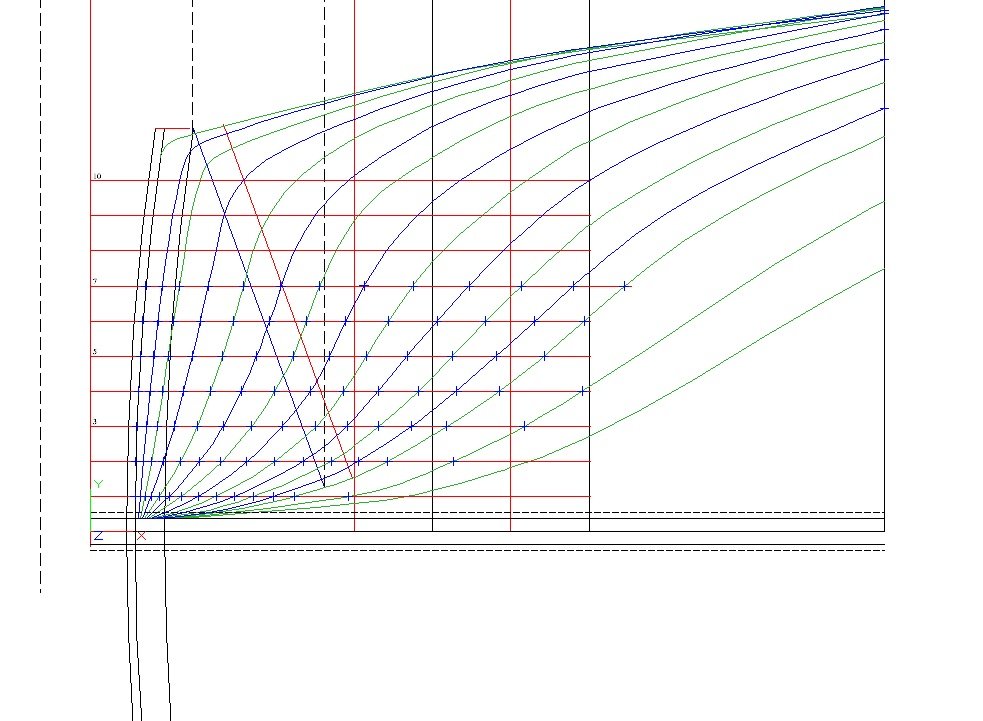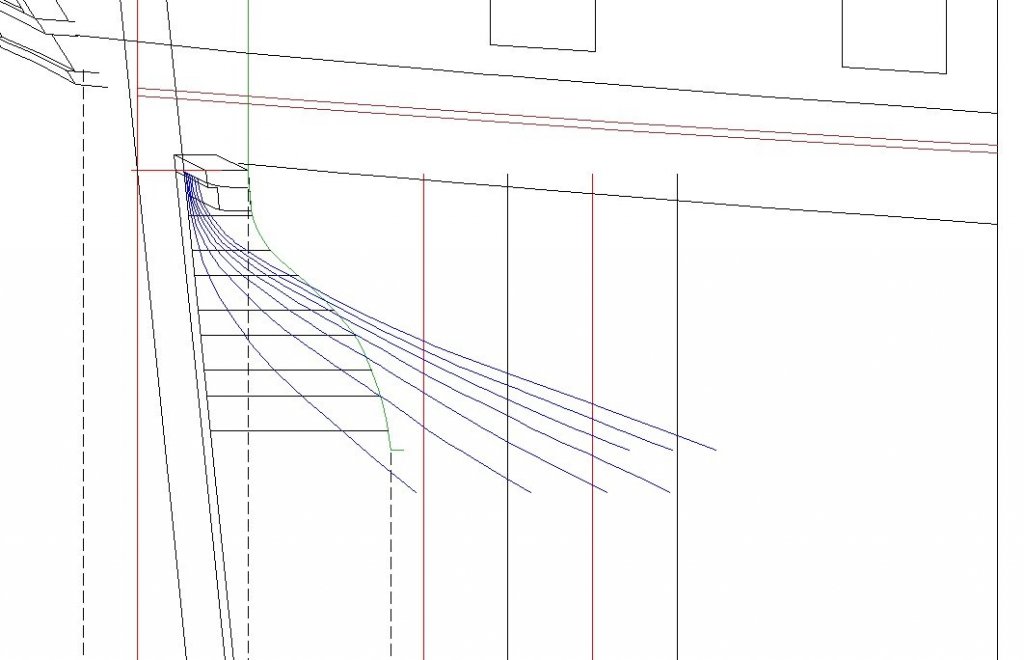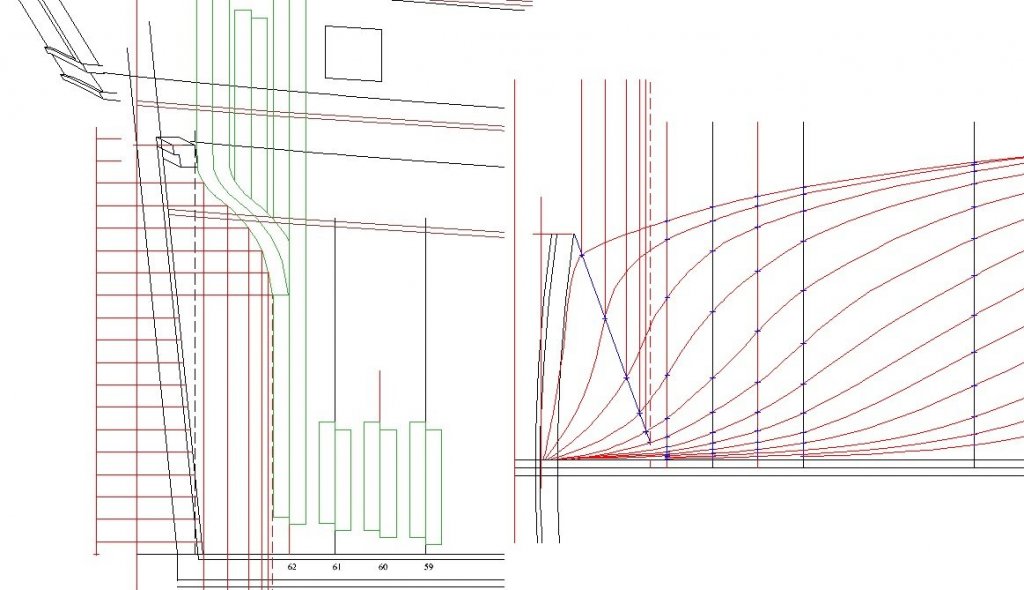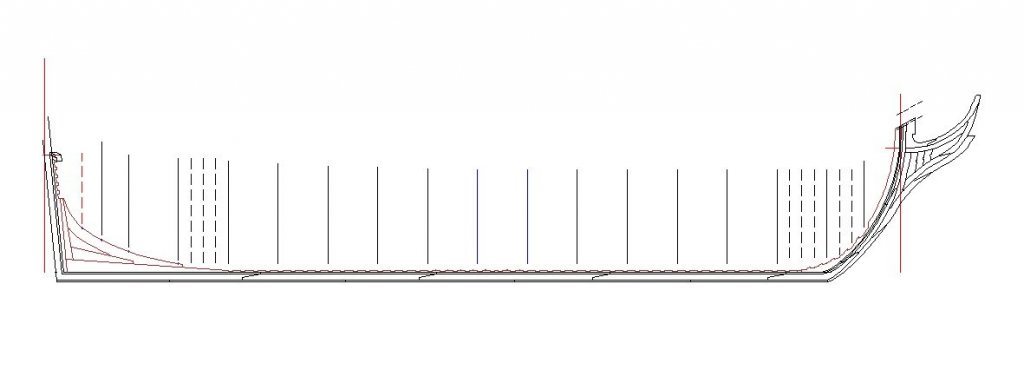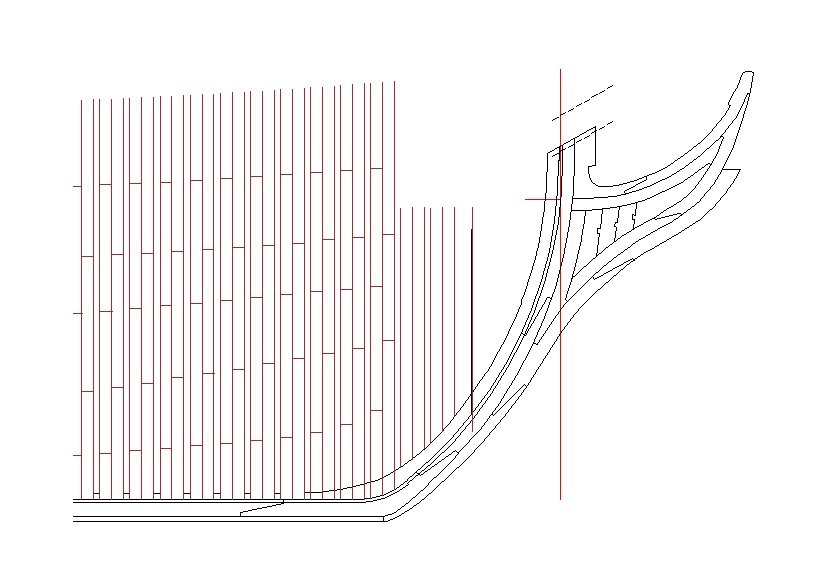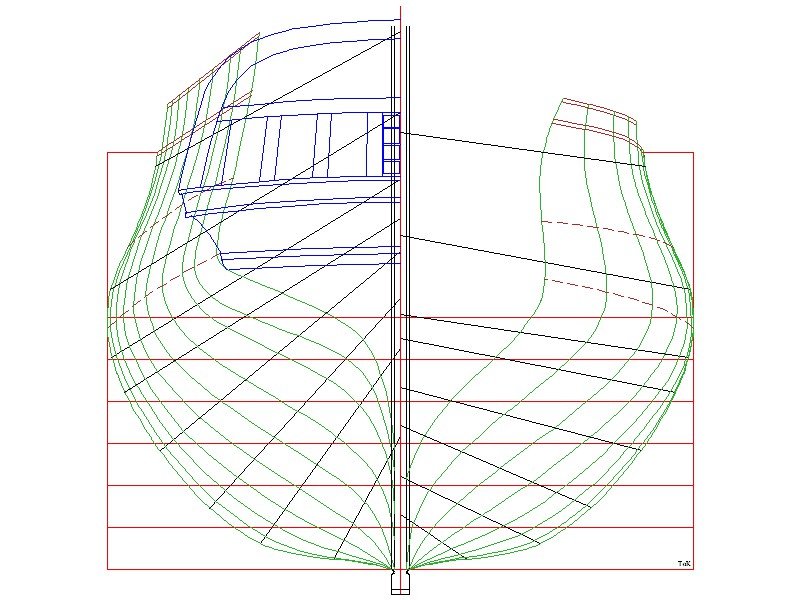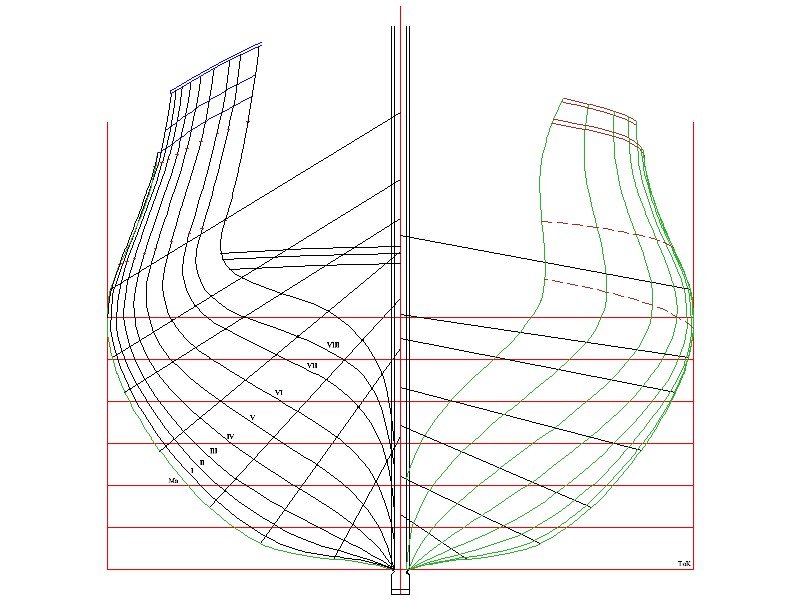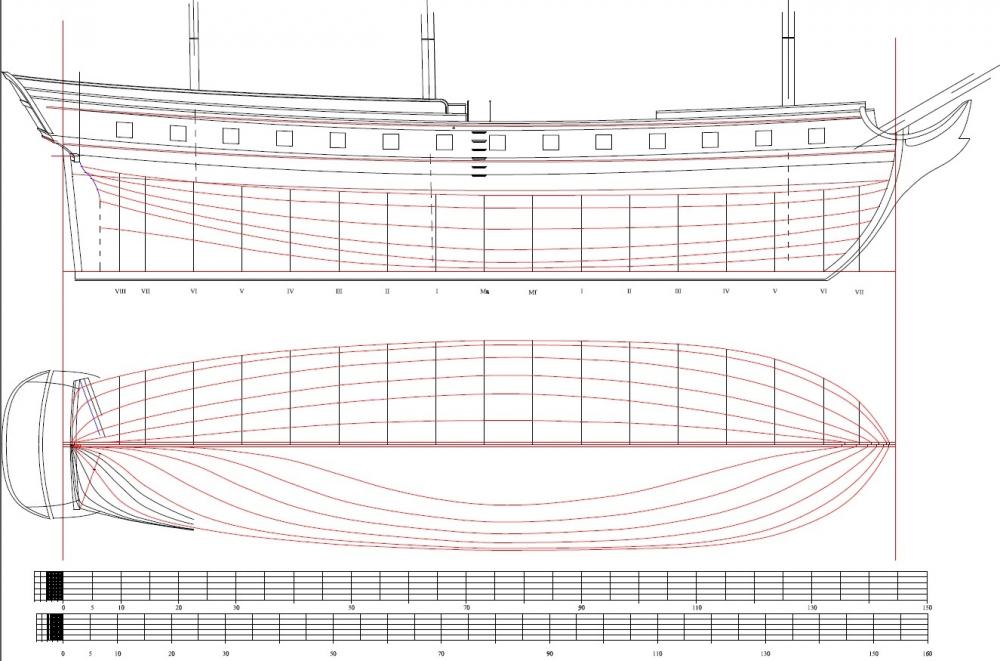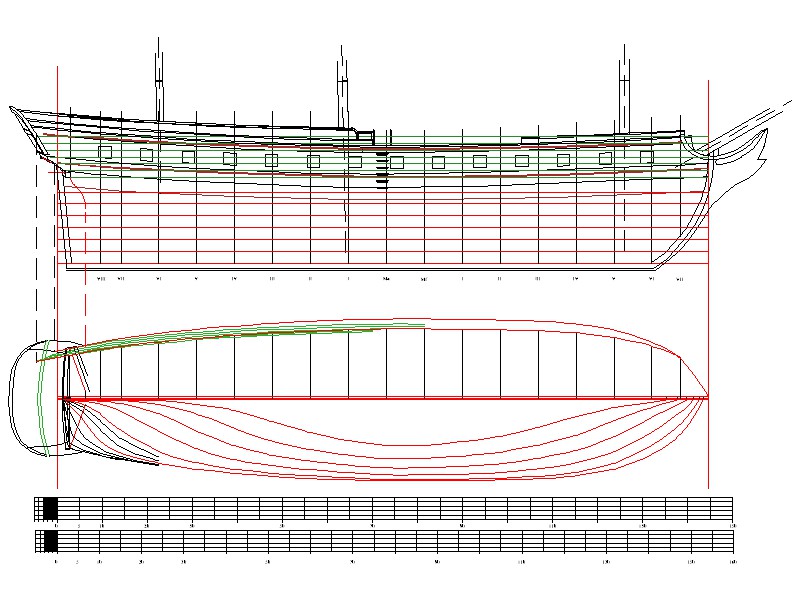-
Posts
309 -
Joined
-
Last visited
Content Type
Profiles
Forums
Gallery
Events
Everything posted by JohnE
-
Oh, yes Sir, you have been to sea and obviously love her as much as the ships. Your paintings are evocative and profoundly moving in many ways. Thank you for sharing them. You have created a new admirer and customer. I very like your appreciation of service craft and the oft neglected, lonesome and forlorn, patrol boats. My heart has a warm place for Castle class trawlers. John
-
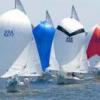
Frégate la Cornélie 1795
JohnE replied to JohnE's topic in CAD and 3D Modelling/Drafting Plans with Software
Thanks all. Have to admit that I had some frustrating periods, but once the lights came on the journey became a lot of fun. Only wish I had known this sooner when poor Mark was having such problems with the stern of his Licorne. Herask and Bava are both encouraging me to get up to speed in Blender so I can do visualizations in 3D. They are really helping me focus the learning curve. The ability to see a complex piece of wood and how it fits with the other pieces, before I pull out the saw, will be I think invaluable. Ciao. John -
Hi Gaetan, I live on the Gulf coast in Alabama, so humidity changes are very large. It really messes with the guitars. I use a humidifier and a dehumidifier to keep things on a relatively even keel (ha, ha). I don't try to climate control, just keep the changes from being too radical. Might help le vaisseau. Love the work on the rablure. John
- 910 replies
-
- ancre
- 74 gun ship
-
(and 1 more)
Tagged with:
-

Frégate la Cornélie 1795
JohnE replied to JohnE's topic in CAD and 3D Modelling/Drafting Plans with Software
Something else that happened is I was able to import quarter-beam and mid-beam lines into the MATLAB hydro program and evaluate the curves for performance. Turns out that Jacques-Noël knew exactly what he was doing. They fall within acceptable modern parameters. Howard Chapelle and Merritt Edson would approve. It also becomes apparent why French ships (although can only speak to Sané types) were so sensitive to trim in order to get most out of their performance regime. The lines purty near say outright that if they have a bit too much load drag, or sailed with a squat, they will suffer and become sluggish, like a lovely lady on the arm of a boor. The kicker comes from Sané's famous 6 inch stretch after Villemaurin's sail trials in the historical Cornélie. Villemaurin noted stern trim sensitivity in great detail, load trimming both up and down, altering mast rake, and the sail suite. It told a lot to Sané. All of the stretch was put from Frame VII aft. Frame VII stayed where it was in the Venus (Hébé) and Virginie series. Frame VIII moved 3 inches farther aft from Frame VII and the aft perpendicular moved 3 inches farther back from Frame VIII. This centers the majority of the stretch smack dab in the region where the quarter buttock crosses the load waterline and stretches out the buttock lines in this area so they are considerably straighter. I was amazed at what a simple 6 inches could do, until I realized that the difference between the "right" design curves and my "wrong" ones were the matter one inch or less, back and forth, up or down. Whoda thunk? Wonder what Jacques-Noël would have done with access to a CAD program. I shiver to think. Ciao. John -

Frégate la Cornélie 1795
JohnE replied to JohnE's topic in CAD and 3D Modelling/Drafting Plans with Software
Thanks Druxey, that's nice to know. Speaking of translations ... had to do quite a bit of Vial du Clairbois for the lovely Cornélie. The compound curvatures of the fashion frame (estain) and the filling transoms have always been quite painful to get right. The main reason is no one has done those for a Sané design before, so there is nothing to use as a guide or make intelligent judgments from. The British didn't take off enough lines in the right places to provide a suitable guide, and even the lines in the Chaumont Papers are way too few and far-between, besides being completely unidentified. Woof! Everything was a guestimate, and wrong, as it turns out. I had to go back to the well. Vial has a section on this. Very informative, but superficial, and lacking in the very details that I needed for a proper understanding. Then I just happened to open Vol II. I had previously assumed Tome II was simply an 1805 retitling and reprint of Tome I with some additions. Wrogn again! I was fooled by the totally similar table of contents. Turns out that Tome II begins where Tome I leaves off. Seems that Tome I is the undergrad book having all the basics and sufficient gloss to get one started. Tome II, however, is the graduate level "design and construction theory" course book. Every section begins with the assumption you have Tome I open to the appropriate place and the Tome I drawings are at hand. Then it launches into detail ... thought I would have a heart attack! Woof! All right! Design the darn things from scratch! This is better than buttermilk pancakes! So I did. And it worked. And it didn't just work, the lines flowed directly into those of the well documented sections from Sané's devis. My estain was a bit off in body plan and profile views, and the waterlines and buttock/bow lines behind the estain needed considerable adjustment. Before, they were smooth, but arbitrary. Always subject to tweaking back-and-forth depending on which curve I started with - body, waterline, diagonal, ... Finally, after much sturm, drang und todesangst, I really think I have an understanding of French stern construction. Some pics. Waterlines (level lines) just flat look good. Not just that, but they grid out such that each level-line point projects right smack dab where it is supposed to on the profile buttocks and body plan, and arsey-versey. All this was the basis of the loft of the filling transoms. Easy peasy once the surface was completely defined. -

Swan class 3D model in progress
JohnE replied to dvm27's topic in CAD and 3D Modelling/Drafting Plans with Software
Wonderful pictures and outstanding work. Prekrasan !! ciao John- 104 replies
-
- pof swan series
- swan
-
(and 1 more)
Tagged with:
-

Frégate la Cornélie 1795
JohnE replied to JohnE's topic in CAD and 3D Modelling/Drafting Plans with Software
Unfortunately, no. The Mungo Murray treatise includes an abridgement of parts of Elemens de l'architectue navale by Duhamel du Monceau, but I think that's about it. So far as I know, Olivier, Ozanne, Morineau, Monceau, Forfait, Clairbois, Lescallier, even de Freminville, have not been translated except privately. John -

Frégate la Cornélie 1795
JohnE replied to JohnE's topic in CAD and 3D Modelling/Drafting Plans with Software
Hello Dan, French gammoning hole positions are often different from British practice. Boudriot mostly places his in the fill piece (garniture) between the cheek curves (courbes de jottereau) as you note. There is no 'rule' per se, and I have seen different designers position them in different places. Vial du Clairbois just says "make sure there is good purchase". It's no surprise that the French rig out different since their bowsprit steeve is 30 some degrees rather than the British 22 or so degrees, at least for frigates. Hope this helps. John -
Salut Gaetan I am doing exactly that for my Cornélie. I have the quille and contre-quille in 3D and am lofting each frame with special attention to the rabbet angles. It is interactive - I place a frame/couple and then tweak the keel assembly underneath it to reflect a proper shape to receive the garboard strake. It is fun and interesting to watch the rabbet shape evolve as I move farther and farther aft. When the process is finished, I will have a set of suitable plans for the keel pieces, as well as lofted frames/couples that fit. 3D is a bit of a challenge, but a great deal of fun. If you enjoy drafting plans and figuring out fiddly-bit details, 3D is a rewarding exercise. John
-

Frégate la Cornélie 1795
JohnE replied to JohnE's topic in CAD and 3D Modelling/Drafting Plans with Software
Thanks for the likes. I was a bit remiss and forgot to put up some pics. Here's some of the guidelines for the lofting. This part makes sure that the lines are ok in all three views and everything checks against the Devis. There are a (very) few places where the Devis is inconsistent by a (very) small amount, but they are all in the fiddly-bits category. All things considered, she's coming along beautifully; everything is falling right into place. That means it's time to be extra careful so I don't get bit in the Coulomb. -

Frégate la Cornélie 1795
JohnE replied to JohnE's topic in CAD and 3D Modelling/Drafting Plans with Software
The stern lofting of Cornélie is pretty well finished and golly, does she have lovely looking buttocks. Fashion frame(s) and filling transoms fair in nicely and the surface differentials, for defining the wood’s shape and curve, are complete. The remaining step is to position it all on the massif and define the pieces of the deadwood, and their curvatures. Whew! That was hard! Well, not so much hard as incredibly painstaking. I got inspired by the 3D work done for the Swan Group by their European mystery guest. I am trying some of the same techniques to get rabbets looking right and get good plots of cutting-down lines, etc.. The goal is to have the plan set that includes a synthesis of benchmark lines representing both French and British practice. Much of what people are used to seeing on British plans seems to be missing somehow from the French equivalent. However, it is probably better to say that certain information is not necessarily missing, but is rather presented in a completely different manner. So why not combine the two? CAD is so cool! -
The idea of French frigates, and ships in general, being ‘better’ than others was true to a large extent at a certain period in time. The development of French warship technology and construction dates back to the mercantilist policies initiated by Richelieu and mastered by Colbert, with much of the increased state revenues going into development of the Navy, including development of the dockyards, schools, manpower base, and other infrastructure. Colbert’s bureaucratic system allowed France to pursue technological advances in ship construction and maritime science, helped along no doubt by the burgeoning influence of the Academie Royale des Sciences and the dramatic revolutions in the sciences engendered by the Enlightenment. This institutionalization of French shipbuilding, and subsequent professionalism of the shipbuilding industry, promoted uniform understanding and dissemination of technical improvements throughout the Naval establishment. In short, the immersion into the scientific principles of vessel motion and hull form led to led to the development of a new ‘model’ for French warships (Paul Hoste, Théorie de la Construction des Vaisseaux, 1697). They were considerably longer and broader than contemporary British or Dutch ships, but even with increased beam, they had a larger length/beam ratio. Modern naval architecture recognizes the importance of Lwl and L/B in determining vessel performance, especially speed. Indeed, the development of the science of metastability, and its calculation, resulted in the desire to find the optimum L/B ratio for vessels of various sizes and functions; too narrow a beam resulted in poor initial stability, a very tender sailing vessel, and inability to carry armament. Too wide a beam resulted in the increase of drag resistance and very poor performance with the breeze far forward or far aft (beating and running). In short, they “wallowed like pigs’. For the most part, the French Navy, under the Naval Ordinance of 1689, was the envy and touchstone of Naval establishments the world over. This obtained until about 1765, when the neglect imposed by the Seven Years War, and the consequent exhaustion of finances took hold with a vengeance. There was a brief interlude under Gabriel de Choiseul, and a second under Gabriel de la Croix de Castries, but in the later third of the eighteenth century, the French naval establishment suffered, perhaps most of all, from the pervasive bureaucratic retrenchment into irresolution, conservatism, and self perpetuation, affecting the State in general. Although many incremental advances were made, the state of revolutionary (and evolutionary) innovation languished. By this time, Britain, the Netherlands, Denmark, Spain, etc.. had caught up. Britain established its own scientific, academic, and bureaucratic infrastructure, learning from the experience and success of the French. They were certainly not above deconstructing notable captured vessels, right down to counting the bolts, and learning as much as possible about how ‘the other guy does it’, but by the last decade of the century she had grasped and internalized all the essentials of design and construction for performance. France still had the vestigial reputation, and her ships were admittedly fast and elegant. However, given the divergence of French and British naval doctrine, and British adherence to scientific principles of design and construction, French vessels were no longer the ‘best’, or even ‘better’, for British imperitives. This is a very thin and superficial gloss on the subject, and I apologize to those already familiar with its intricacies, for the amount of abstraction. There is room for several books, on several individual subjects, in this brief. Hopefully someone will find their muse and be moved to write one. John
-

Frégate la Cornélie 1795
JohnE replied to JohnE's topic in CAD and 3D Modelling/Drafting Plans with Software
More progress. The spine is pretty well settled in; keel, bow, stern, deadwood. To finalize things, I had to make an executive decision on the sided dimensions of frames/couples. Room and space is a simple calculation; station spacing is 101 pouces, there are three filling couples per station (except extreme forward and aft), so room and space is 25 pouces, 3 lignes. All I had to do was determine the frame siding. The kinda, sorta, "rule" from the echantillon is 9 pouce 6 lignes. However, this does not correspond with measurements taken by the British off captured Sané frigates. The majority of frames measured out at 9 1/2" which converts to 9 pouces. At least one vessel, albeit built in Venice, had frames sided 9" which is a skoosh less than 8 pouces 6 lignes. Everyone agreed that the Venetian vessel was lightly built and notably departed from the French standard. So is typical frame siding 9 pouces, or 9 pouces 6 lignes? Well, I split the difference. Frame siding is 9 pouces 3 lignes, giving a couple siding of 18 pouces 6 lignes, and a spacing of 6 pouces 9 lignes. It is basically a 13.5mm departure from the "rule" at full scale. Anyway, that's the story. Next on the do list is loft the hawse and bollard timbers. That will finish l'Etrave. Last is loft the stern assembly. I am marshaling all the curses I can find in every language I have ever heard of, since I know that the infamous compound curvatures of the fashion frame and filling transoms are waiting to bite me in the butt, again, and I need to be prepared. Ciao. John -
Hello Gaetan, I think the drain notch should go all the way forward and aft. Connect all the frames/couples that have space between them, including crotches on deadwood and apron. Ship has a pitching motion, and if there is water above the floorboards amidships, it will slosh forward when the ship pitches down, and slosh aft when the ship pitches up. It seems a good idea to drain away water from the space between crotches if (or when) it collects there from sloshing. This may not be necessary in normal cases, but sometimes leaks can be rather large and let in a bunch of water. Ciao. John
- 910 replies
-
- ancre
- 74 gun ship
-
(and 1 more)
Tagged with:
-
Me too, Mark. Have some catching up to do. It's a bee-you-tee-ful summer day here on the gulf coast, 90+ degrees with 90+ % humidity. Can't wait to see the interior planking. Stay well. John
-
Wow, that looks like so much fun! I love the rig, and imagine they go like a rocket on a broad reach in a blow. I especially like the "Comizo Lisbona" going wing-on-wing on the previous page. Beautiful boats. Simply beautiful. Ciao. John
-

Frégate la Cornélie 1795
JohnE replied to JohnE's topic in CAD and 3D Modelling/Drafting Plans with Software
Ok wood. This is exciting. Keel, keelson, bow assembly, stern post assembly, deadwood, and disposition of square frames, completed. What's left to do is loft the bow and bollard timbers, loft the fashion frame and filling transoms, and cut their mounting steps in the fore and aft deadwood. Positioning the square frames determined the placement of their steps on the keelson, so that's done. Things look very nice from VII forward to VIII aft. Quick word on the bow construction pieces. Vial du Clairbois shows individual pieces comprising the bow on 4 separate large Plates. Each Plate shows a very different arrangement and orientation of the timbers. All I can conclude is that these elements (or many of them, at any rate) constitute fiddly-bits. He makes certain position recommendations in the text (which I follow) but the central, generally triangular, area seems to be a terra permisio, where just about anything goes depending on what's in the woodpile at the time. All the pieces are about where they are in at least one of the drawings. It's getting really close to sawdust time. I can forsee starting a scratch build log in the not too distant future. -

Frégate la Cornélie 1795
JohnE replied to JohnE's topic in CAD and 3D Modelling/Drafting Plans with Software
Hello, Capt and thank you. I’m looking forward to it myself. All I originally had was just a few sentences of description in a general catalog listing. It was enough, barely, to suggest an approach for the figurehead. All it said was the figure ‘holding a vessel with the flamme sacrée’. So Hestia came immediately to mind and Cornelia, after all, was the epitome of family virtue and righteous Roman motherhood. David took the idea and ran with it. He even has ‘her hair bound in Roman fashion’. It’s gorgeous. The description has the stern carving as Cornelia with both arms extended, one refusing the riches of Ptolemy, the other embracing her children (the Gracchi). Who knows what is shown on the carving detail, or what was done in actuality. Cynically, but realistically, it was probably something like what the Virginie ended up with, crossed flags and cannon, with a prominent phyrgian cap hanging off a spear or crossed fasces. Boring. The Directory was a bit too liberté, égalité, conformité for my taste. Things likely had a bit more flair in the Empire. But then again, who’s to say, really? Even if the carving plan shows the usual Republican ‘stuff’, there is that listing in the catalog. I will take that as a historical grant of poetic license. Big grin! Ciao. John -

Frégate la Cornélie 1795
JohnE replied to JohnE's topic in CAD and 3D Modelling/Drafting Plans with Software
Ok, here she is. Boy, oh boy, those plan corrections sure made the afterbody look lovely. Obviously, going to have to do the John magic again and design in the last full frame IX and do the adaptation of the estain from faired buttocks. Fiddly bits. Current state is just right for the profile plan of the keel assembly, bow and stern assembly, and fore and aft massifs. That leads directly into the disposition of frame. Wonderful progress. -
One of the main problems with getting older is that when parts break they are not only out-of-warranty, but also discontinued/out-of-stock. Have been under the weather for a time, but am able to get about a bit better and can’t imagine a more therapeutic exercise than rescuing my darling Cornélie from the bitter dust of neglect. Things were looking good for her a year or so ago, but I was constantly troubled by teensy, tiny, niggling little inconsistencies that didn’t quite reconcile in all three orthogonal views. I ended up doing quite a bit of ‘reconstruction’ a la Chapelle and Merrit Edson. Getting back into the flow, I decided to refresh myself by going back to the basics, so I reexamined all the devis to make sure I didn’t do something stupid somewhere. Needless to say, that is just what I had done. Rechecking the contents, in the miscellaneous pile, I found a set of pages with off-set tables stuck in with the tables of scantlings, iron work, and sparring. The pages were titled ‘Errors’ and had lovely columns comparing off-set values from a devis with values from a master design plan. Wouldn’t you know it, an out of order page begins with “Erreurs du Devis et du Plan de la frigate la Justice, envoyé le 14 Mars par M. Sané” and includes all the column descriptions and explanations for the different measurement methods. Lovely things like “le devis donne … le plan donne ….”. It puts a descriptive name to the 7th lisse (diagonal ribband), rentrée, relating to tumble home, something that was part of the old heartburn. Playing with it, in this context, I found that it represented the region where the frame outline running batten has an inflection point, going from convex to concave. Combining this epiphany with the corrected off-set values resulted in curves that were not only more correctly implemented, but also exquisitely elegant. The tumble home now looks like ‘la taille élégante incurvée d'une jeune fille’ as it should. In another development, Gérard Delacroix let me know of a ‘design of the stern decoration of Cornélie’ available from Service Historique de la Marine. As soon as it arrives, I will have a plan of the stern to go along with the beautiful figurehead that David designed for her. Everything seems to be falling into place. It’s almost scary … I’m waiting for the other shoe to drop. Here is a pic of the revised lines of the body plan. The corrected stuff is way more svelte and, yes, elegant. The left (aft) side is as it originally was and one can see the difference between the grace of the 1795 curves compared to the straighter, more utilitarian, shapes of the later classes (i.e., Pallas) formalized in the 1810 regulation. The corrected aft master is on the body plan (in green), so if one looks closely, one can see just what a better understanding of measurement point meaning gets you. Working on design of the master couple, disposition of frame, and framing the bow, stern, keel, apron, deadwood, and bears, oh my! More to come; slowly, but it will come. John
-

Frégate d'18 par Sané , la Cornélie
JohnE replied to JohnE's topic in CAD and 3D Modelling/Drafting Plans with Software
Apologies for my prolonged absence. Health issues presented an unexpected and unwanted intrusion. It seriously disturbed my Wa. Easing back into the harness so should be able to, once again, make a pest of myself in the near future. John -

Frégate d'18 par Sané , la Cornélie
JohnE replied to JohnE's topic in CAD and 3D Modelling/Drafting Plans with Software
Speaking of yard dogs, I've been a yard dog with the Cornelie design. I have been doing a complete reconstruction of the lines plans according to the paradigm set out by Howard Chapelle and Merritt Edson, and it has been an astonishing experience. I have found that much of the original French tablature is quite relevant and accurate (most of it, actually). But there were some significant grey areas in the regions from Station VII-a to the stern, particularly in the region of the 'malicieux et capricieux' estain. She has been an absolute witch for over a year, but I think I got her attention, now. Plotting the new lines has been fun. Overlaying the old lines shows just how closely the old and new coincide in pertinent part. Those areas that differ, do so by a matter of a pouce (1:1 scale French feet). Amazing what one pouce here, one pouce there, actually does. Most of the tweaks were in terms of lignes (1/12 of a pouce), on a full scale drawing - Woof !!! So have a serious set of offsets and plotted the diagonals Only minimal tweaking required to the body plan, that did not disturb waterlines. Looked really good, so decided to have some fun and plot the diagonals on the profile plan. These are the French 'lisses' which are the batten positions according to the documentation of the design "devis". These look very good as well. Mr Mark-1 eyeball is pleased. Everything from VIII-a to VII-f is smooth and uniform. From VII-a, VIII-a to the fashion, things diverge, but I look at the lines between VII-a and l'estain, and I can see the curve velocity and convexity change such that I can visualize the complex curvature of the stern, just from the lines on the profile. Howard Chapelle, Merritt Edson, Jr. The yard dogs vade mecum. Woof !! Woof, woof, woof !! John -

Frégate d'18 par Sané , la Cornélie
JohnE replied to JohnE's topic in CAD and 3D Modelling/Drafting Plans with Software
Mark, That is really cool and doesn't surprise me. My copy is still lurking in the bowels of the Customs Service, but I'll make sure to check that out and get my chuckle when it finally arrives. I see that a lot in the wreck archaeology reports from TAMU and from the Canadians working on provincial marine wrecks. There's always a couple pages, if not a chapter, describing the differences between the wreck timbers and what's shown on plans. T'is exciting stuff for a model builder or plan designer. It pretty much says that one is not straight-jacketed by strict conformance to scantling or dimensionality. It's good to do good plans and faithfully follow them, but sometimes, departures must be made. We are yard dogs in scale. Nice to know the big dogs did the same thing. One day someone will do a monograph on yards and yard dogs that focuses on their knowledge, professionalism, and that je ne sais quoi that lets them get away with it. I'll be all over that one. Thanks, Mark. John -

Frégate d'18 par Sané , la Cornélie
JohnE replied to JohnE's topic in CAD and 3D Modelling/Drafting Plans with Software
Thank you Nils. French lines sure were elegant. Bava, is your Cybele the Nymphe class frigate by P.A. Lamothe? I can't seem to find another Cybele in the lists anywhere. Just fyi, if she is the Lamothe frigate, Thetis was another Nymphe and much of a muchness with Cybele. The British captured Thetis in 1808 and NMM has plans of her as HMS Brune. Might be good for comparison purposes. Just sayin'. Put some thoughts on the Lamothe Cybele on the research sub-forum. I think she is worth considering. Ciao. John -

Frégate d'18 par Sané , la Cornélie
JohnE replied to JohnE's topic in CAD and 3D Modelling/Drafting Plans with Software
Plotted deck lines on the half breadth plan and they are looking shiny. Right off the off-set tables. Either I'm living right or I have a bit too much El Jimador in my margarita and am fooling myself that I'm seeing clearly. Bava might appreciate the conjugation, since deck lines were a problem when he put the old files into blender. Gosh, I love the people here. They push and poke and prod and make one do it right. Anyway ... John
About us
Modelshipworld - Advancing Ship Modeling through Research
SSL Secured
Your security is important for us so this Website is SSL-Secured
NRG Mailing Address
Nautical Research Guild
237 South Lincoln Street
Westmont IL, 60559-1917
Model Ship World ® and the MSW logo are Registered Trademarks, and belong to the Nautical Research Guild (United States Patent and Trademark Office: No. 6,929,264 & No. 6,929,274, registered Dec. 20, 2022)
Helpful Links
About the NRG
If you enjoy building ship models that are historically accurate as well as beautiful, then The Nautical Research Guild (NRG) is just right for you.
The Guild is a non-profit educational organization whose mission is to “Advance Ship Modeling Through Research”. We provide support to our members in their efforts to raise the quality of their model ships.
The Nautical Research Guild has published our world-renowned quarterly magazine, The Nautical Research Journal, since 1955. The pages of the Journal are full of articles by accomplished ship modelers who show you how they create those exquisite details on their models, and by maritime historians who show you the correct details to build. The Journal is available in both print and digital editions. Go to the NRG web site (www.thenrg.org) to download a complimentary digital copy of the Journal. The NRG also publishes plan sets, books and compilations of back issues of the Journal and the former Ships in Scale and Model Ship Builder magazines.



